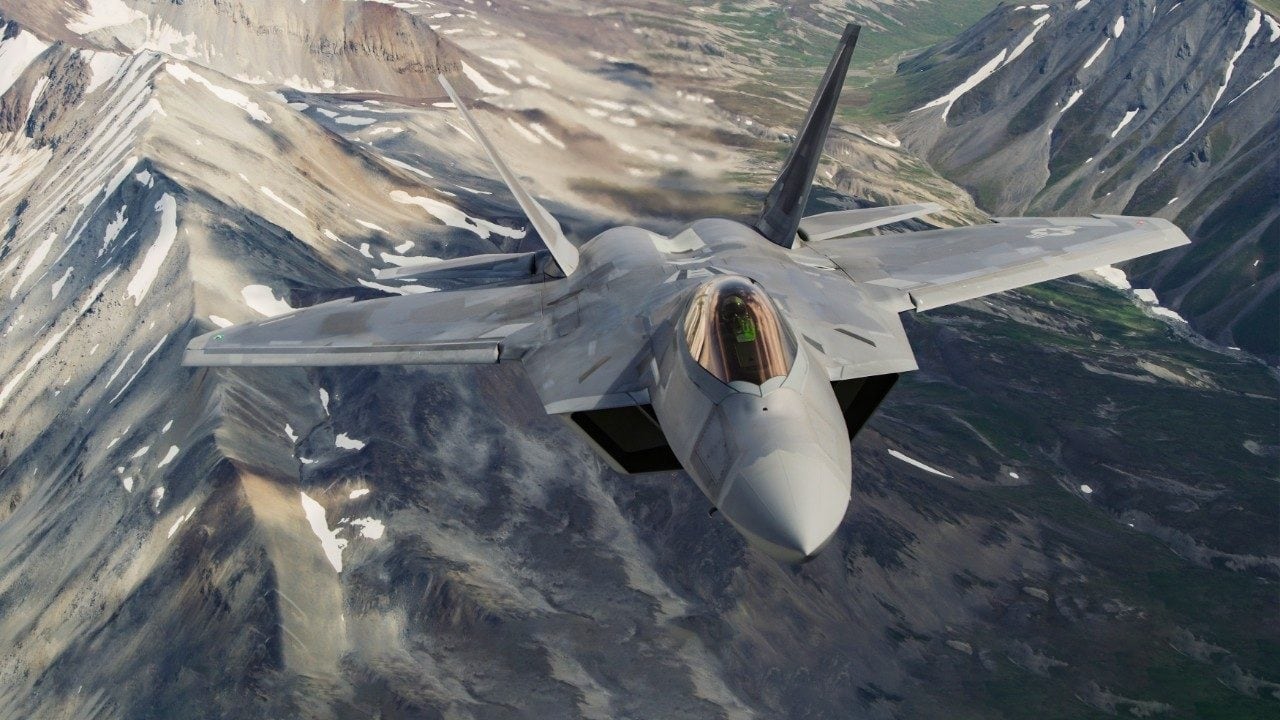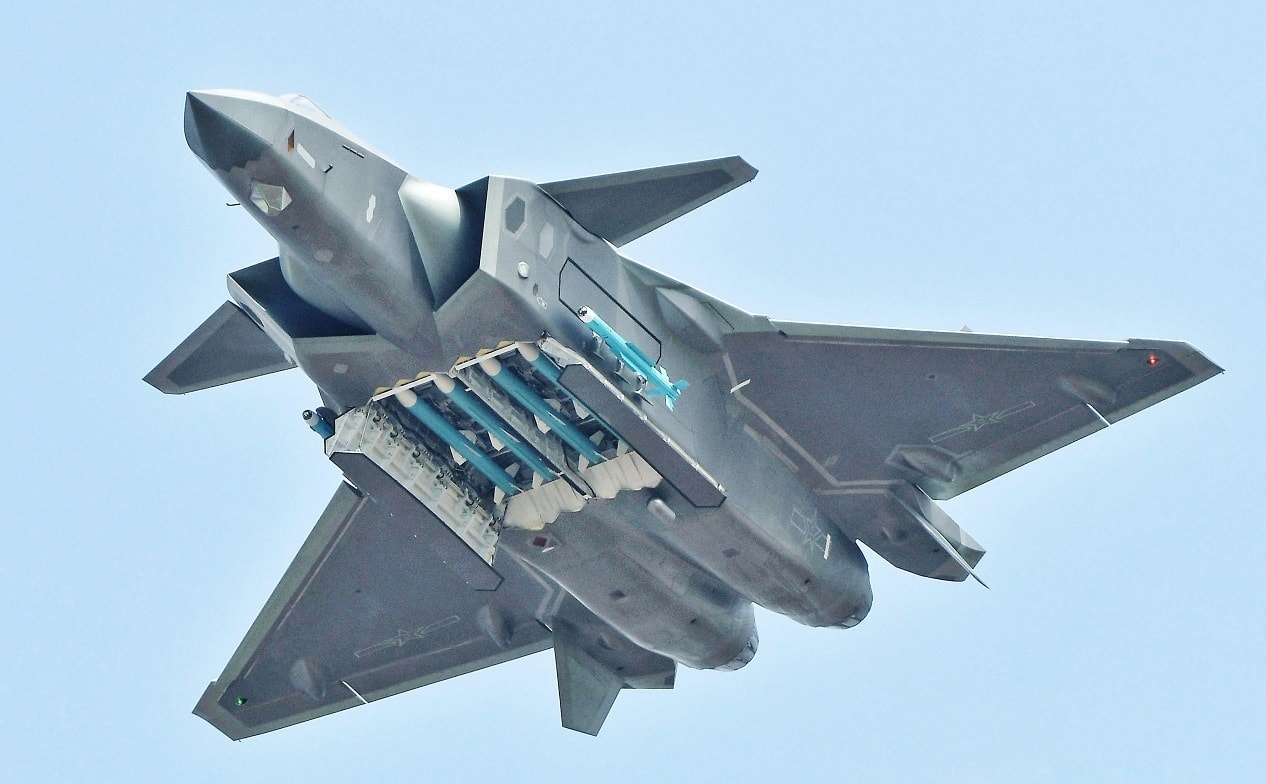What You Need to Know: China’s J-20 stealth fighter, known as the “Mighty Dragon,” underscores Beijing’s progress in fifth-generation aviation. Developed by Chengdu, the J-20 emphasizes stealth, advanced avionics, and long-range strike—albeit with questions about its engines and true radar cross-section.
-Analysts compare it to America’s F-22 and F-35, with the U.S. jets arguably retaining an edge in maneuverability, stealth, and engine reliability. Still, China is rapidly closing the gap through continued upgrades and production.
-While the J-20’s overall capabilities against Western fighters remain difficult to assess, its mere existence demonstrates China’s emergence as a key player in advanced air combat technologies.
-Despite the flurry of news about China’s latest stealth fighters, the country’s earlier stealth programs are still relevant today.
Mighty Dragon Revealed: Inside China’s Fifth-Gen J-20 Jet
The Chengdu J-20, also known as the “Mighty Dragon,” is a Chinese fifth-generation stealth fighter jet and one that represents a significant milestone in the country’s ambition to modernize its military capabilities.
The multi-role fighter places an emphasis on stealth, long-range strike capabilities, and advanced avionics. The jet made waves when it was introduced into service with the People’s Liberation Army Air Force (PLAAF) in 2017. It was touted as a direct competitor to American fifth-generation jets like the F-22 Raptor and F-35 Lightning II.
The J-20’s design prioritized stealth and air dominance. Its angular fuselage and canted vertical stabilizers contribute to radar cross-section reduction, a staple of stealth technology, and the jet’s thrust-vectoring engines give it a high degree of maneuverability.
Its large airframe gives it a large weapons loadout, carried internally not to compromise its stealth capabilities, and newer variants of the jet, featuring redesigned engines, likely provide a further boost in thrust, range, and dogfighting capabilities.
When the jet was introduced into Chinese service, commentators made direct comparisons to the jet and its American counterparts, the F-22 Raptor and the F-35. This is, however, not an easy exercise.
China vs. America: A Stealth Fighter Showdown?
A straight one-to-one comparison of the J-20 and the F-22 would be difficult, as there are several key differences between those two platforms in terms of performance and mission focus. The American F-22 was designed primarily as an air superiority platform with unparalleled agility, speed, and stealth capabilities.
The J-20’s design, on the other hand, indicates a prioritization of versatility and long-range engagements, though potentially at the expense of dogfighting capabilities when compared to the F-22.
The Raptor’s thrust-vectoring nozzles and its ability to supercruise would give it a significant edge in close-quarters maneuverability and speed compared to the J-20.
And while the J-20 is a stealthy aircraft, analysts believe its radar cross-section may be somewhat, if not significantly, larger than the F-22’s, limiting its utility in highly contested aerial environments.

F-22 Raptor. Image Credit: Creative Commons.
J-20 Stealth Fighter: Pros and Cons
Though certainly among the most capable fighters in the Chinese fleet, the J-20 may have a few shortcomings — particularly in comparison to its Western — and specifically American — counterparts.
One of the most prominent of these is the jet’s powerplants. The J-20 is powered by a pair of Ws-10C engines, a domestic design that may be outclassed by the performance offered by the Pratt & Whitney F119 and F135 engines in the F-22 and F-35, respectively.
Issues like a lower thrust rating and reliability questions are also potential shortcomings, though this may be addressed in future models with the introduction of new engines. Another area where the jet may be outclassed relates to its stealth capabilities.
Its radar absorption properties and the overall effectiveness of the jet’s stealth are thought to lag behind its American counterparts.
Overall, the United States has a long history of manufacturing fifth-generation fighters, while China is a comparative newcomer to the field — though that gap is narrowing. Fighter logistical infrastructure, pilot training, and combat experience are areas where the United States still retains an advantage, though that gap is also diminishing.
Whether the J-20 can rival the F-22 and F-35 remains to be seen, but what is clear is that China has made great strides in the fifth-generation fighter realm.
One-to-one comparisons between the Chinese and American fighters are problematic, but what is clear is that China is firmly within a very exclusive club of nations that have fifth-generation fighters in production and in service.
About the Author: Caleb Larson
Caleb Larson is an American multiformat journalist based in Berlin, Germany. His work covers the intersection of conflict and society, focusing on American foreign policy and European security. He has reported from Germany, Russia, and the United States. Most recently, he covered the war in Ukraine, reporting extensively on the war’s shifting battle lines from Donbas and writing on the war’s civilian and humanitarian toll. Previously, he worked as a Defense Reporter for POLITICO Europe. You can follow his latest work on X.

